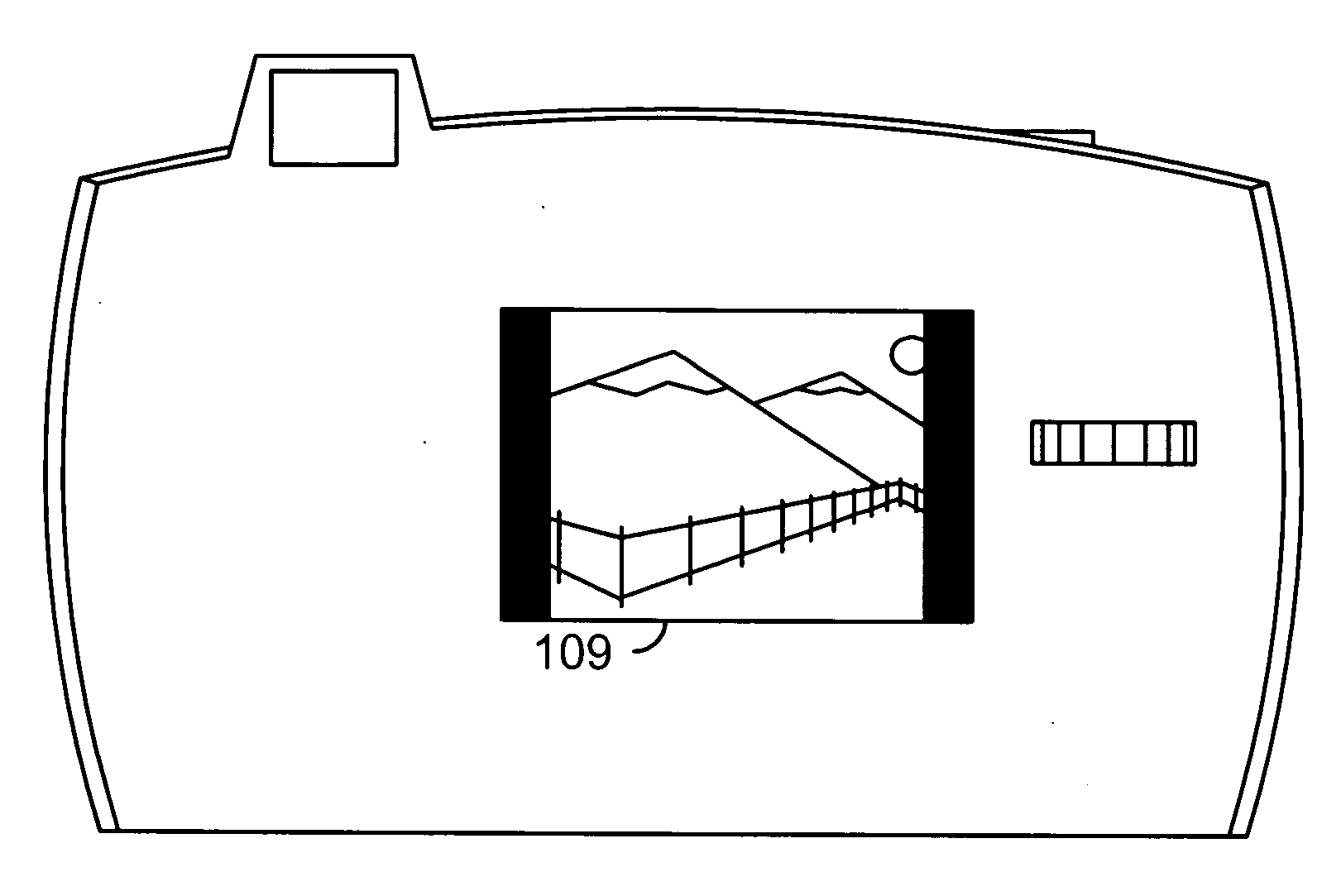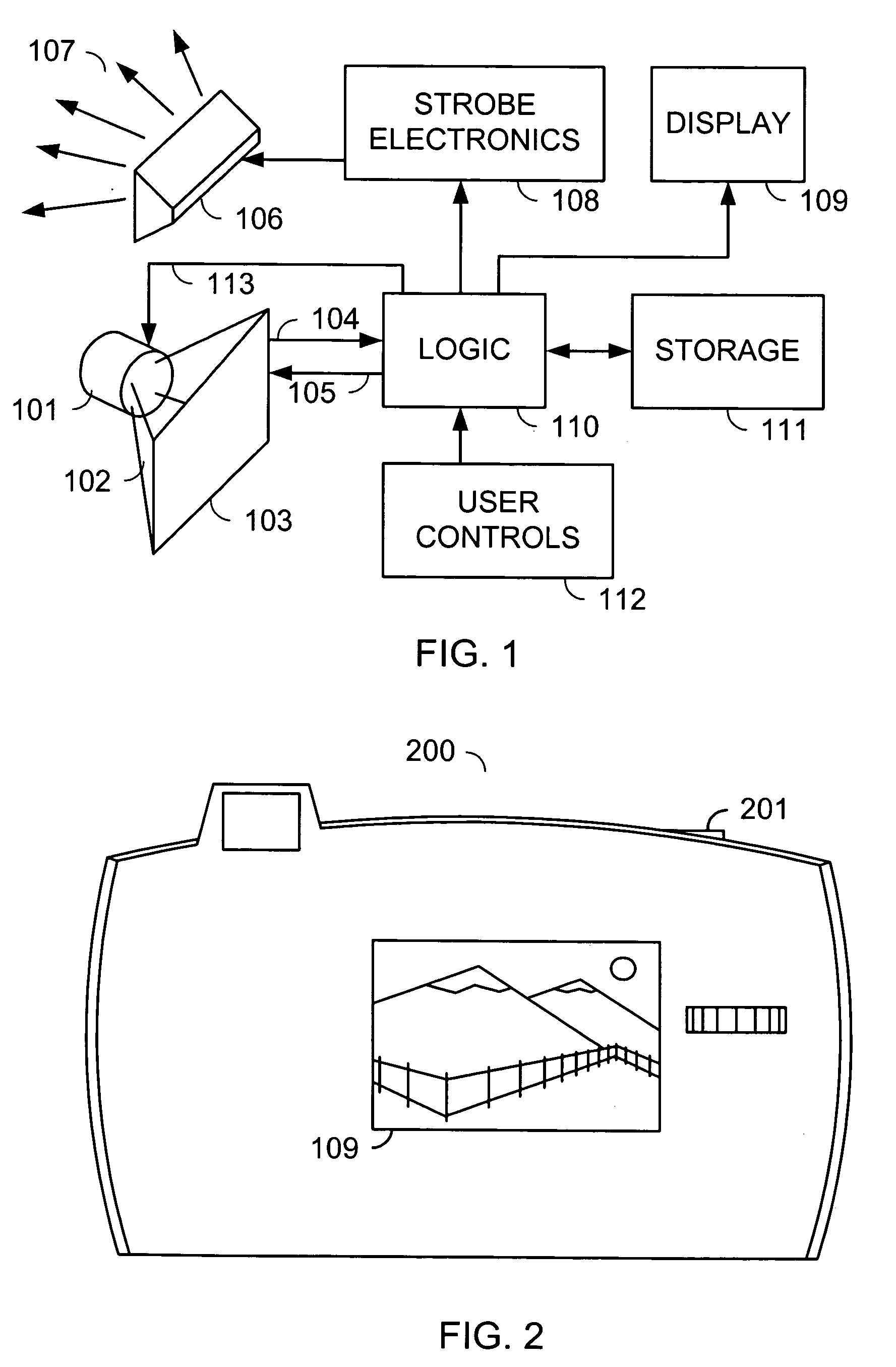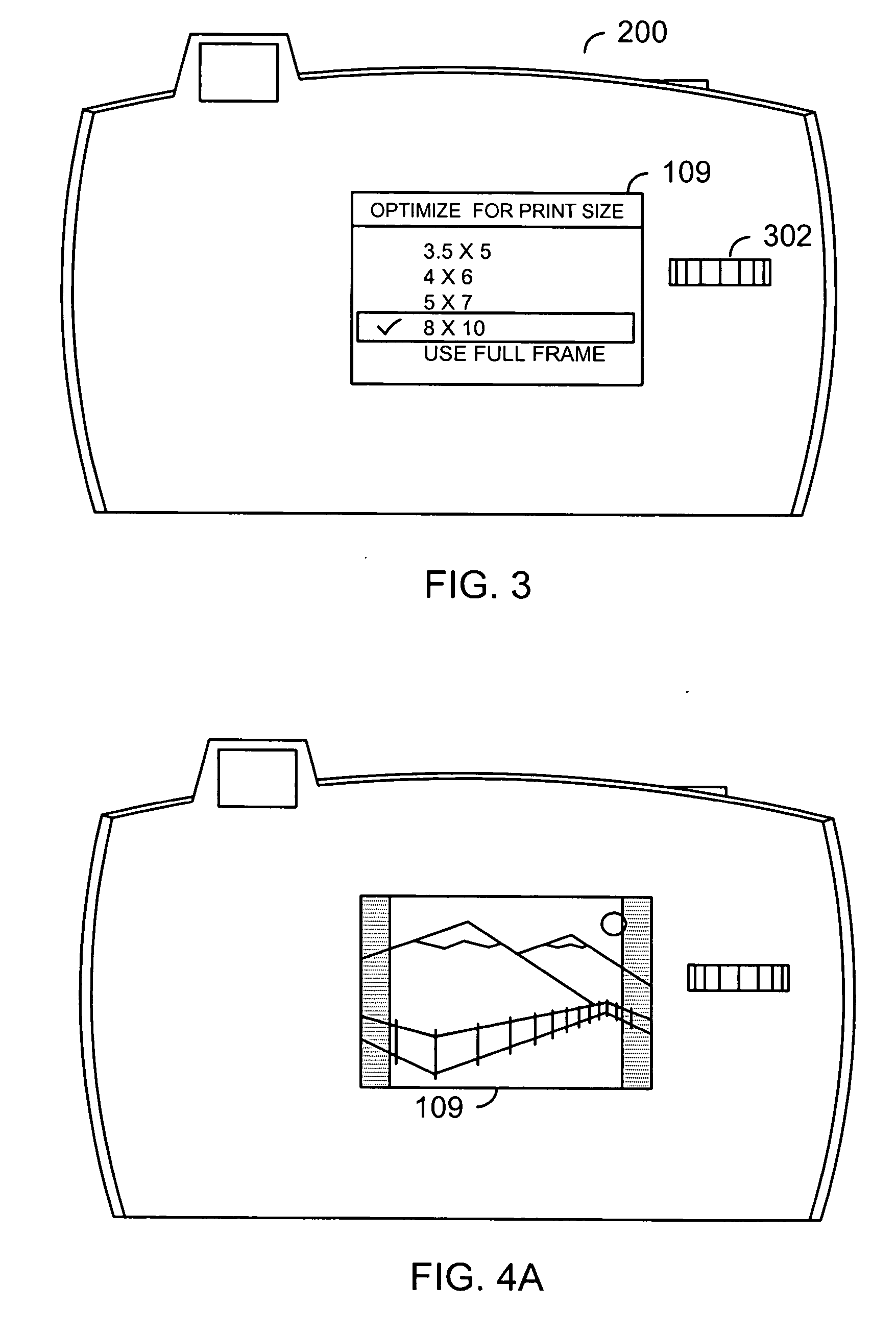In-camera cropping to standard photo sizes
a technology of in-camera cropping and photo size, applied in the field of photography, can solve the problems of unsatisfactory existing ways to avoid this problem, give the photographer little control over how the photographs are printed, and disappoint the choice made by the automated printing lab
- Summary
- Abstract
- Description
- Claims
- Application Information
AI Technical Summary
Problems solved by technology
Method used
Image
Examples
Embodiment Construction
[0019]FIG. 1 depicts a simplified block diagram of a digital camera. A lens 101 gathers light from a scene (not shown). The lens redirects the light so that the redirected light 102 forms an image of the scene on an electronic array light sensor 103. Electronic array light sensor 103 may be a charge-coupled device (CCD) sensor, an active pixel complementary metal oxide semiconductor (CMOS) sensor, or another kind of sensor. Image data 104 from electronic array light sensor 103 is transmitted to a logic unit 110. The logic unit may comprise a microprocessor, a digital signal processor, one or more application specific integrate circuits (ASICs), or some combination of these, and controls the operation of electronic array light sensor 103 using control signals 105. Logic unit 110 may also control the operation of lens 101 using control signals 113. Logic unit 110 may also process digital photographs in various ways, including applying image compression techniques to them. The camera m...
PUM
 Login to View More
Login to View More Abstract
Description
Claims
Application Information
 Login to View More
Login to View More - R&D
- Intellectual Property
- Life Sciences
- Materials
- Tech Scout
- Unparalleled Data Quality
- Higher Quality Content
- 60% Fewer Hallucinations
Browse by: Latest US Patents, China's latest patents, Technical Efficacy Thesaurus, Application Domain, Technology Topic, Popular Technical Reports.
© 2025 PatSnap. All rights reserved.Legal|Privacy policy|Modern Slavery Act Transparency Statement|Sitemap|About US| Contact US: help@patsnap.com



